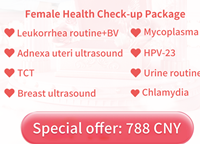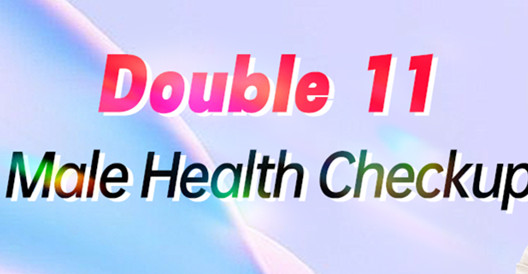Nonallergic Rhinitis overview
Nonallergic rhinitis is a medical term that describes a set of symptoms that resemble an allergy but that occur without a known cause. It produces symptoms such as:
Postnasal drip
Runny nose
Sneezing
Stuffy nose
Usually, it develops in adulthood, and symptoms last year-round.
Unlike allergic rhinitis, nonallergic rhinitis does not involve the immune system. About 58 million Americans have allergic rhinitis. By comparison, 19 million have nonallergic rhinitis.
Nonallergic rhinitis can cause just as much misery as allergic rhinitis. It can also be associated with the same complications, such as:
Sinusitis, which is inflammation or swelling of the tissue that lines the sinuses
Eustachian tube dysfunction. Eustachian tubes connect the middle ears to the back of the throat
Chronic ear infection, known as otitis media
Loss of smell or anosmia
Asthma
Obstructive sleep apnea
Both types of rhinitis are associated with:
Decreased production at work
Increased doctor visits
Side effects from treatment, such as drowsiness, nosebleed, and nasal dryness
Because the two are so similar, it's often necessary to perform allergy tests and blood tests to tell them apart.
Causes of Nonallergic Rhinitis
Often, what causes nonallergic rhinitis is unknown. And the condition is often confirmed only after other conditions such as allergic rhinitis or infection are ruled out.
Environmental irritants are common triggers of nonallergic rhinitis. Some are found in the home and others are more common in the workplace.
Examples of what can trigger symptoms include:
Car exhaust
Chlorine
Cigarette smoke
Cleaning solutions
Glues
Hair spray
Latex
Laundry detergents
Metal salts
Perfume
Smog
Wood dust
When such triggers cause nonallergic rhinitis, they also often cause asthma.
Some medications can trigger non-allergic rhinitis. Examples include:
NSAIDs -- nonsteroidal anti-inflammatory drugs such as aspirin andibuprofen
Oral contraceptives
Blood pressure medicines such as ACE inhibitors and beta-blockers
Antidepressants
Tranquilizers
Drugs used to treat erectile dysfunction
Foods and beverages may also sometimes be triggers. Examples include:
Hot foods, such as soup
Spicy foods
Alcoholic beverages, especially beer and wine
Other triggers include:
Illegal drugs. Cocaine and other snorted street drugs often cause chronic nonallergic rhinitis.
Weather changes. Sudden changes in weather or temperature can trigger nonallergic rhinitis. Skiers, for instance, often develop a runny nose. And some people are affected by any cold exposure. In some cases, people even start sneezing after leaving a cold, air-conditioned room.
Hormone changes. Nonallergic rhinitis often occurs during periods of hormonal imbalance. For instance, it may occur during puberty,menstruation, or pregnancy. It usually starts during the second month of pregnancy and lasts until childbirth. Hormonal conditions such as hypothyroidism can also trigger symptoms.
Treatment of Nonallergic Rhinitis
Nonallergic rhinitis can't be cured. But it can be controlled by:
Avoiding rhinitis triggers
Using home remedies such as nasal irrigation
Taking over-the-counter and prescription medications
Allergy shots -- immunotherapy -- are not used to treat nonallergic rhinitis.
If you have nonallergic rhinitis, it's important that you not smoke and not allow smoking in your home.
Other strategies to reduce exposure to triggers include:
Avoid wood-burning stoves and fireplaces if they cause symptoms.
Avoid cleaning agents, household sprays, perfumes, and scented products if they cause symptoms.
Ask family, friends, and co-workers not to use scented products that cause symptoms.
Avoid any chemical or material that tends to make you sneeze or have a runny nose.
Talk to your doctor about the medications you now take. If your nonallergic rhinitis is triggered by a medicine you need, your doctor may suggest a substitute.
Many people with nonallergic rhinitis benefit from performing nasal irrigation. This refers to rinsing of the nostrils with a salt water -- saline -- solution one or more times a day. Over-the-counter products for doing this include bulb syringes, neti pots, and bottle sprayers.
During each irrigation, rinse each nostril with at least 200 mL (about 3/4 cup) of commercially or home-prepared solution.
It's important to note that, according to the CDC, if you are irrigating, flushing, or rinsing your sinuses, use distilled, sterile, or previously boiled water to make up the irrigation solution. It’s also important to rinse the irrigation device after each use and leave open to air dry.
When performed once or twice a day, nasal irrigation may especially help treat postnasal drip. It's also a helpful technique to clear the sinuses before using medicated nasal sprays.

 (8621)54893781,64688888-801/810
(8621)54893781,64688888-801/810  info@renai.cn
info@renai.cn Chinese
Chinese








 沪公网安备 31010402006742号
沪公网安备 31010402006742号